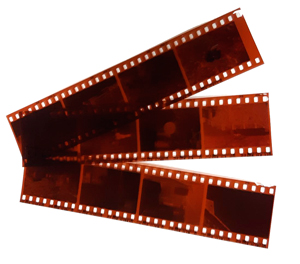In the world of packaging, advertising, and even filmmaking, you might have come across a shimmering, metallic effect that captivates your senses. This captivating effect is none other than metallized film, a versatile and visually striking material that is used in various industries. Among the various methods of metallization, the Roll-to-Roll Metallized Film stands out as an efficient and cost-effective choice. In this blog, we will delve into the fascinating world of metallized film, with a special focus on the roll-to-roll process.
What Is Metallized Film?
Metallized film is a type of flexible packaging material that undergoes a process in which a thin layer of metal, typically aluminum, is deposited onto a plastic film. This process is employed to achieve a wide range of functional and aesthetic properties. Metallized films can be found in various forms, including polyester (PET), polypropylene (PP), and more, depending on the application.
Why Metallized Film?
Metallized film offers a plethora of benefits, making it a popular choice in many industries:
- Aesthetic Appeal: The reflective and metallic appearance of metallized film adds a premium and eye-catching quality to packaging and labels. It’s a surefire way to make your product stand out on the shelf.
- Barrier Properties: The metal layer on the film provides excellent moisture and oxygen barrier properties. This is vital for extending the shelf life of perishable products.
- Lightweight: Metallized films are incredibly lightweight, which is advantageous for both manufacturing and transportation. It reduces overall packaging costs and carbon footprint.
- Printing and Labeling: The surface of metallized film is conducive to high-quality printing and labeling, enhancing the visual appeal of the product.
- Versatility: Metallized film can be used in a wide range of applications, from food packaging and automotive components to decorative accents and insulating materials.
Roll-to-Roll Metallization: A Closer Look
Roll-to-Roll metallization is a method of applying a metal layer to a continuous roll of film. This process is a continuous, high-speed, and cost-effective way of metallizing films. It’s achieved through a series of steps:
- Substrate Preparation: The plastic film (usually PET or PP) is unwound from a roll and passed through a series of rollers to ensure it’s clean and ready for metallization.
- Vacuum Metallization: The film is then introduced to a vacuum chamber where aluminum or other metal is evaporated and deposited as a thin, uniform layer onto the film’s surface. This creates the reflective, metallic effect.
- Rewinding: After metallization, the film is rewound onto another roll, ready for further processing or converting into packaging, labels, or other products.
Advantages of Roll-to-Roll Metallization
- Cost-Effective: The continuous process and high-speed production make roll-to-roll metallization cost-effective, making it the preferred choice for large-scale production.
- Consistency: Roll-to-roll metallization ensures uniform metal deposition, resulting in a consistent, high-quality finish.
- High Throughput: This method can handle large quantities of material in a relatively short time, making it ideal for high-demand industries.
- Versatile: It is suitable for a wide range of substrates and can accommodate various metal types, including aluminum, copper, and more.
Applications of Roll-to-Roll Metallized Film
The versatility of roll-to-roll metallized film makes it suitable for a diverse range of applications:
- Food Packaging: Metallized films provide an excellent barrier to moisture and oxygen, extending the shelf life of products like snacks, coffee, and confectionery.
- Labels and Printing: The reflective surface is perfect for creating labels with a premium look, ideal for products in the beauty, beverage, and high-end industries.
- Decorative Applications: Metallized films are used in decorative applications like gift wrapping, balloons, and more to add a touch of sparkle and elegance.
- Electronics and Solar Industry: Metallized films are essential components in electronic circuitry and solar panels.
